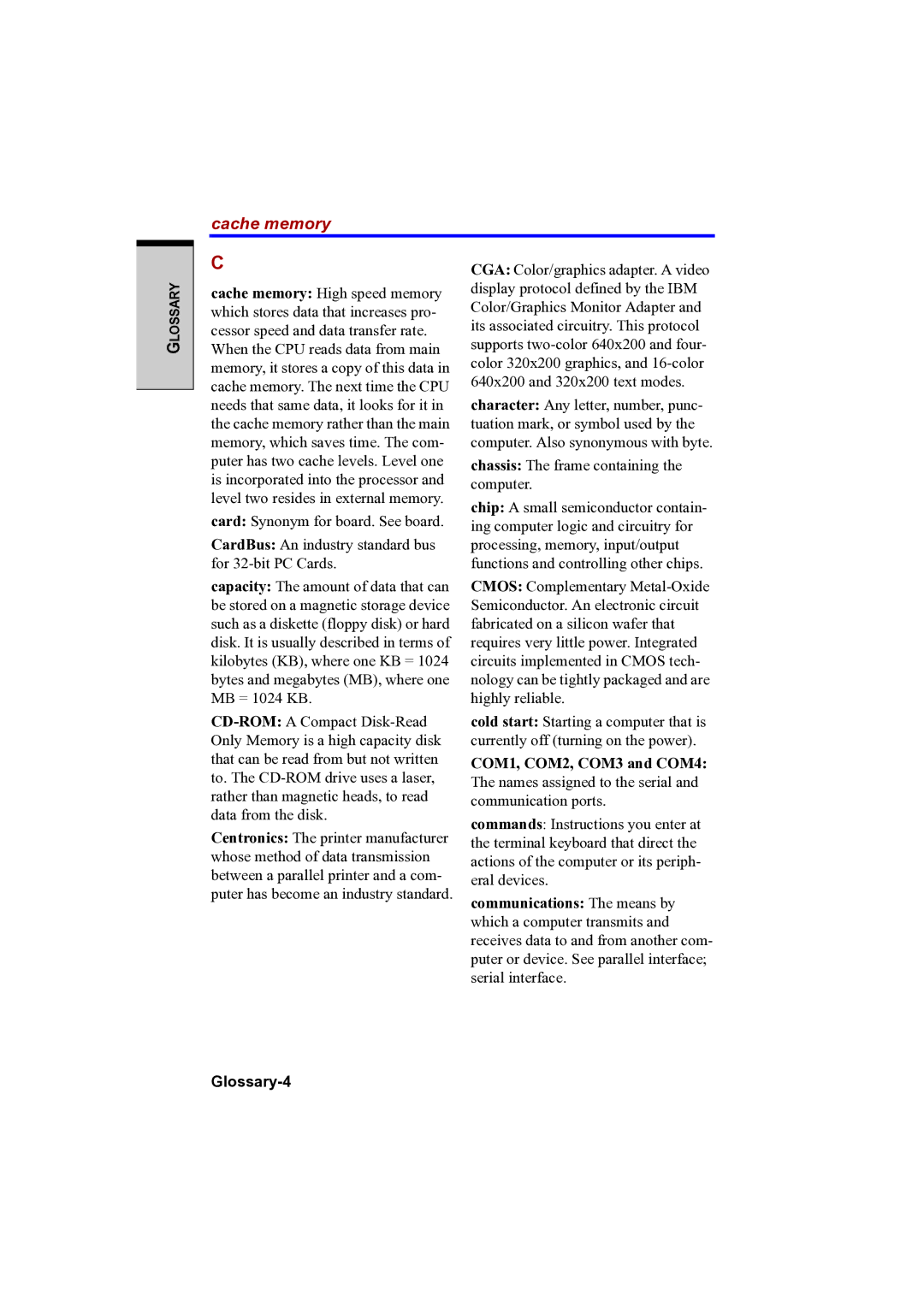
cache memory
GLOSSARY
C
cache memory: High speed memory which stores data that increases pro- cessor speed and data transfer rate.
When the CPU reads data from main memory, it stores a copy of this data in cache memory. The next time the CPU needs that same data, it looks for it in the cache memory rather than the main memory, which saves time. The com- puter has two cache levels. Level one is incorporated into the processor and level two resides in external memory.
card: Synonym for board. See board.
CardBus: An industry standard bus for
capacity: The amount of data that can be stored on a magnetic storage device such as a diskette (floppy disk) or hard disk. It is usually described in terms of kilobytes (KB), where one KB = 1024 bytes and megabytes (MB), where one MB = 1024 KB.
Centronics: The printer manufacturer whose method of data transmission between a parallel printer and a com- puter has become an industry standard.
CGA: Color/graphics adapter. A video display protocol defined by the IBM Color/Graphics Monitor Adapter and its associated circuitry. This protocol supports
character: Any letter, number, punc- tuation mark, or symbol used by the computer. Also synonymous with byte.
chassis: The frame containing the computer.
chip: A small semiconductor contain- ing computer logic and circuitry for processing, memory, input/output functions and controlling other chips.
CMOS: Complementary
cold start: Starting a computer that is currently off (turning on the power).
COM1, COM2, COM3 and COM4: The names assigned to the serial and communication ports.
commands: Instructions you enter at the terminal keyboard that direct the actions of the computer or its periph- eral devices.
communications: The means by which a computer transmits and receives data to and from another com- puter or device. See parallel interface; serial interface.
